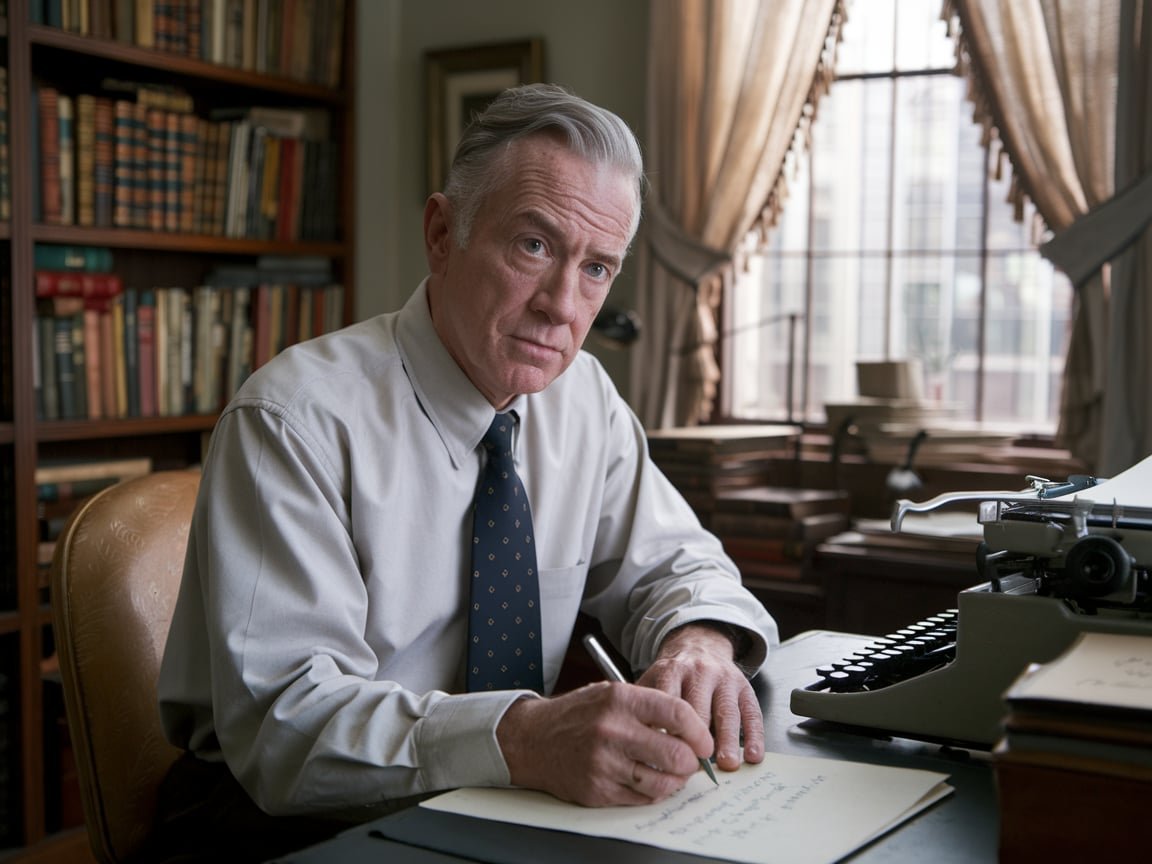Introduction
John Steinbeck’s “East of Eden” stands as a monumental work in American literature, a sprawling epic that delves deep into the human condition, family dynamics, and the eternal struggle between good and evil. Published in 1952, this novel has captivated generations with its rich characters and complex themes. In this comprehensive exploration, we’ll dive into the heart of “East of Eden,” uncovering its enduring appeal and relevance in today’s world.

The Genesis of East of Eden
Steinbeck’s Magnum Opus
Steinbeck considered “East of Eden” his magnum opus, summing up everything he had learned. The novel‘s conception came from a desire to tell the story of his maternal family, the Hamiltons, and to explore the rich history of the Salinas Valley where he grew up.
Biblical Inspirations
At its core, “East of Eden” is a modern retelling of the Biblical story of Cain and Abel. Steinbeck weaves this ancient tale into 19th and early 20th century America.
Plot Overview of in East of Eden
“East of Eden” follows two families, the Trasks and the Hamiltons, through multiple generations. The story focuses on the Trask family, beginning with Adam Trask, his wife Cathy, and their twin sons. As the narrative unfolds, we witness the complex relationships between these characters and how their choices echo the eternal struggle between good and evil.
Key Plot Points:
- Adam Trask’s troubled childhood and relationship with his brother Charles
- The introduction of the enigmatic and malevolent Cathy Ames
- Adam and Cathy’s marriage and the birth of their twin sons
- Cathy’s abandonment of her family and her transformation into the madam “Kate”
- The coming of age of Cal and Aron, and their contrasting personalities
- The tragedy that befalls the Trask family as a result of hidden truths and misunderstandings

Character Analysis
Adam Trask
Adam Trask serves as one of the central figures in the novel. Adam’s journey from naive idealist to disillusioned but hopeful father forms the story’s backbone. Adam’s relationship with his wife Cathy and his sons Cal and Aron showcases the complex dynamics of love, betrayal, and forgiveness.
Cathy Ames
Perhaps one of the most memorable and controversial characters in American literature, Cathy Ames is portrayed as a embodiment of evil. Her actions drive much of the plot, and her presence looms over the story even when she’s not directly involved. Steinbeck’s portrayal of Cathy raises questions about the nature of evil and whether some people are born without the capacity for goodness.
Cal and Aron Trask
The twin brothers Cal and Aron represent the novel’s central conflict, echoing the biblical story of Cain and Abel. Cal, struggling with his perceived dark nature, and Aron, seemingly pure and good, embody the dual nature of humanity. Their relationship and individual journeys form the emotional core of the latter part of the novel.
Samuel Hamilton
Based on Steinbeck’s own grandfather, Samuel Hamilton serves as a moral compass in the story. His wisdom, creativity, and zest for life provide a counterpoint to the darker elements of the narrative. Through Samuel, Steinbeck explores themes of innovation, the American dream, and the importance of choosing one’s own path in life.

Themes and Symbolism
Good vs. Evil
The central theme of “East of Eden” is the eternal struggle between good and evil. Steinbeck explores this concept through various characters and situations, ultimately suggesting that this duality exists within every individual and that we have the power to choose our path.
Free Will and Determinism
The concept of “timshel” – thou mayest – is a crucial element in the novel. It represents the idea that humans have the freedom to choose between good and evil, rather than being predetermined to one path or the other. This theme is particularly evident in Cal’s struggle with his perceived inherent wickedness.
The American Dream
Through the stories of Adam Trask and Samuel Hamilton, Steinbeck examines the promise and limitations of the American Dream. The novel portrays both the opportunities and hardships faced by those seeking to make a better life for themselves in the American West.
Family and Inheritance
The generational stories in “East of Eden” allow Steinbeck to explore how family dynamics and inherited traits shape individuals. The novel questions whether we are bound by our family’s past or if we can forge our own destinies.

Literary Techniques
Narrative Style in East of Eden
Steinbeck employs a unique narrative style in “East of Eden,” blending third-person omniscient narration with first-person interjections. This approach allows him to provide both a broad view of the story and intimate insights into the characters’ thoughts and motivations.
Symbolism in East of Eden
The novel is rich with symbolism, from the Salinas Valley itself (representing the Garden of Eden) to the names of the characters (Adam, Eve, Cain, Abel). These symbolic elements add depth to the narrative and reinforce the novel’s biblical underpinnings.
Foreshadowing
Steinbeck uses foreshadowing extensively throughout the novel, creating a sense of inevitability in certain plot developments while still maintaining suspense.

Historical and Cultural Context
The Salinas Valley
Steinbeck’s vivid descriptions of the Salinas Valley not only provide a rich backdrop for the story but also offer a snapshot of California history. The novel chronicles the valley’s transformation from a sparsely populated frontier to a thriving agricultural center.
World War I
The inclusion of World War I in the latter part of the novel allows Steinbeck to explore themes of patriotism, disillusionment, and the changing face of America in the early 20th century.
Social Issues
Through various characters and subplots, Steinbeck touches on social issues of the time, including racism, prostitution, and the changing roles of women in society.

Critical Reception and Legacy
Initial Reception
Upon its release in 1952, “East of Eden” received mixed reviews from critics. While some praised Steinbeck’s ambitious scope and powerful storytelling, others criticized the novel for its melodramatic elements and perceived moral simplicity.
Enduring Popularity
Despite initial mixed reviews, “East of Eden” has grown in stature over the years. It is now considered one of Steinbeck’s finest works and a classic of American literature. The novel’s exploration of timeless themes and complex characters continues to resonate with readers around the world.
Adaptations
“East of Eden” has been adapted into various media, most notably the 1955 film directed by Elia Kazan and starring James Dean in his first major screen role. The film adaptation, while only covering a portion of the novel, helped to further cement the book’s place in popular culture.

Relevance in Modern Times
Universal Themes
The themes explored in “East of Eden” – the nature of good and evil, the power of choice, and the complexities of family relationships – remain as relevant today as they were when the book was first published. These universal concepts continue to speak to readers across generations.
Environmental Concerns
Steinbeck’s detailed descriptions of the Salinas Valley and the characters’ relationship with the land resonate with modern environmental concerns. The novel’s portrayal of humanity’s connection to and impact on the natural world feels particularly prescient in an era of climate change and environmental degradation.
Social Commentary
Many of the social issues touched upon in “East of Eden” continue to be relevant in contemporary society. The novel’s exploration of topics such as economic inequality, the immigrant experience, and the role of women provides interesting parallels to current social discussions.
Reading East of Eden Today
Tips for Modern Readers
- Take your time: “East of Eden” is a lengthy novel with multiple storylines. Don’t rush through it; allow yourself to be immersed in Steinbeck’s world.
- Pay attention to the narrative voice: Notice how Steinbeck shifts between omniscient narration and more personal commentary.
- Look for connections: The novel is full of parallels and echoes. Try to identify how different characters and events relate to each other.
- Reflect on the themes: Consider how the novel’s exploration of good and evil, free will, and family relationships applies to your own life and the world around you.
- Explore the historical context: While the themes are universal, understanding the historical setting can enrich your reading experience.

Discussion Questions
- How does Steinbeck’s portrayal of good and evil evolve throughout the novel?
- What role does the concept of “timshel” play in the characters’ development?
- How does the Salinas Valley itself function as a character in the novel?
- In what ways do the characters in “East of Eden” embody or subvert their biblical counterparts?
- How does Steinbeck’s narrative style contribute to the overall impact of the story?
Conclusion
“East of Eden” stands as a testament to John Steinbeck’s skill as a storyteller and his deep understanding of the human condition. Through its sweeping narrative, complex characters, and exploration of timeless themes, the novel continues to captivate readers and provoke thought and discussion. Whether you’re encountering it for the first time or revisiting it after many years, “East of Eden” offers a rich and rewarding reading experience that resonates with the fundamental questions of what it means to be human.
As we navigate our own struggles between good and evil, grapple with our inheritances, and seek to understand our place in the world, “East of Eden” remains a powerful and relevant guide. It reminds us of the power of choice, the complexity of human nature, and the enduring hope that we can shape our own destinies. In the end, like the characters in the novel, we are left with the profound and empowering message of “timshel” – thou mayest – and the responsibility and freedom that comes with it.
Join the Conversation: Share Your Thoughts on ‘East of Eden!

Enjoy it 😉






Leave a Reply